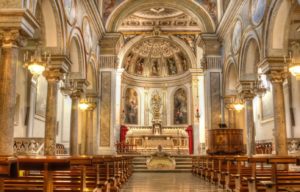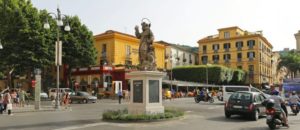Sorrento, a small and reputable seaside resort, is a city of lemons, upscale hotels, and cliffs that cross the heart of the historic center. The city’s long-standing popularity is due to its location at the western entrance to Amalfi. It is also on the Pompeii railway line and offers regular fast ferry services to Capri and Naples. Some friends of mine who are Physiotherapists in Edmonton absolutely loved their time in Italy. Thanks to their input, here are some of the best things to see in Sorrento.
Museo Correale di Terranova
East of the city center, this sprawling museum is worth a visit, be you a watch collector, an archaeologist, or sensitive to pottery. In addition to the wide range of Neapolitan crafts from the 16th to 19th centuries (including exceptional examples of marquetry), you will discover European, Chinese, and Japanese pottery, clocks, fans, and artifacts from the ground floor. Among them is a fragment of a medieval Egyptian carving discovered near Sorrento Sedile Dominova.
Chiesa and Chiostro di San Francesco
This church is located next to the park of Villa Comunale and is famous for the peaceful fourteenth-century cloister, which is accessible by a small door in the church. The courtyard has an Arab portico and intertwined arches that are supported by octagonal columns. Filled with bird songs and bougainvillea, they were built on the ruins of a seventh-century monastery. On the top floor of the International School of Photography in Sorrento, the Celentano gallery presents black and white photos of Italian landscapes and Italian life by Raffaele Celentano, a contemporary local photographer.
 Basilica di Sant’Antonino
Basilica di Sant’Antonino
Named after the patron saint of Sorrento, the oldest church in the city hardly resembles an outer church. The interior of the church paints a more ecclesiastical image with its Roman artifacts, its gilded ceiling, its dark medieval paintings, and the uniqueness of two whale ribs in the hallway near the front door. Apparently, the beloved Saint has performed many miracles, including one in which he saved a child from the belly of a whale. The saint’s bones rest under the baroque interior of an eighteenth-century crypt.
Marina Grande
This once isolated fishing village is remarkably separated from the capital and has no hydrofoils or ferries that populate Marina Piccola. It conveys a timeless maritime flair similar to that of Marina Corricella in Procida. Pastel-colored houses and floating fishing boats give character to a neighborhood known for its family-run fish restaurants. Also, the marina protects what is closest to a Spiaggia (beach) in Sorrento.
Centro Storico
A major hub for bars, restaurants, and shops, Corso Italia, recently pedestrianized, is the main artery pulling from east to west via the busy Centro Storico. Dive into the side streets in the north and you will find narrow alleys flanked by traditional buildings with green shutters, interspersed with the palace, church, and piazza.
